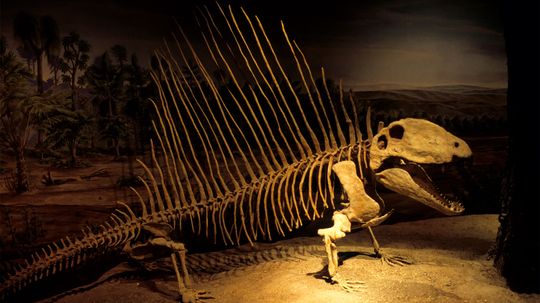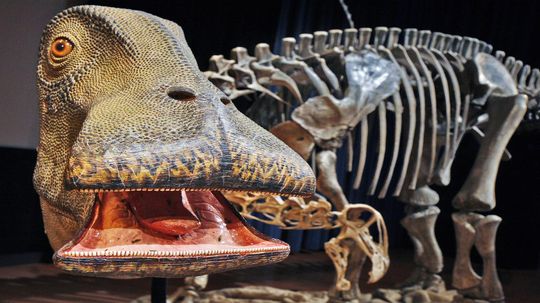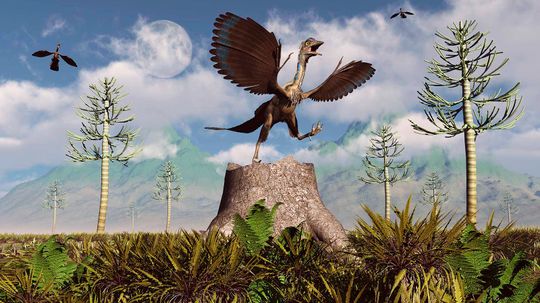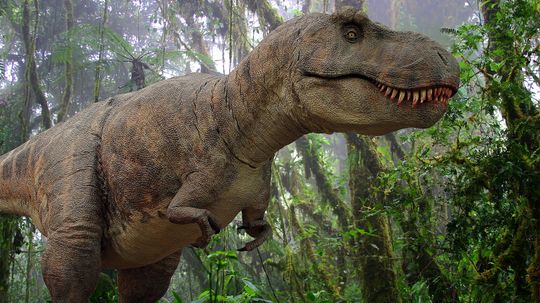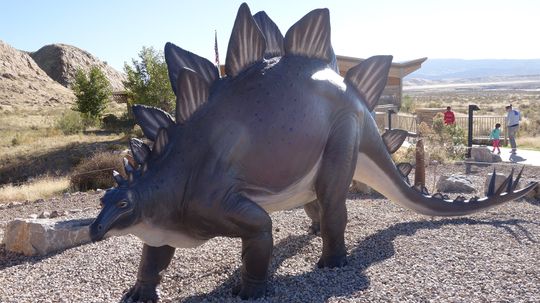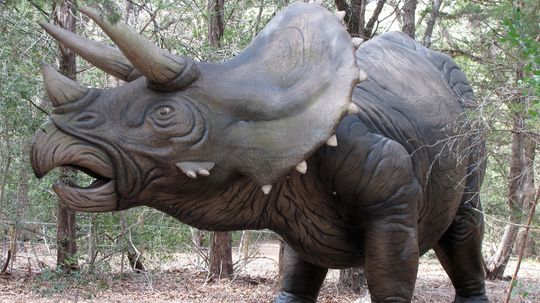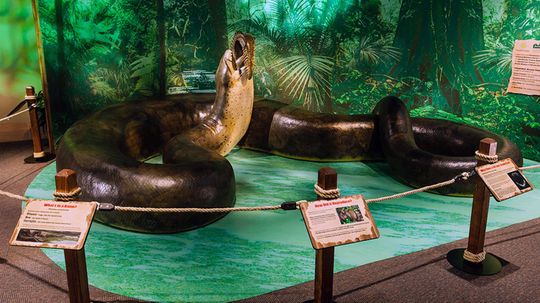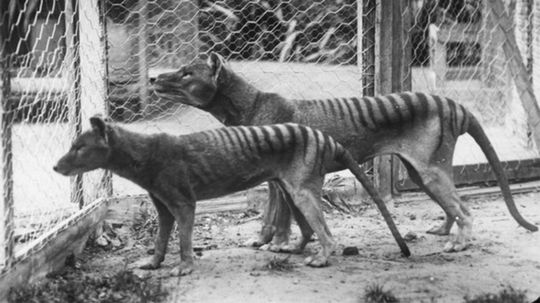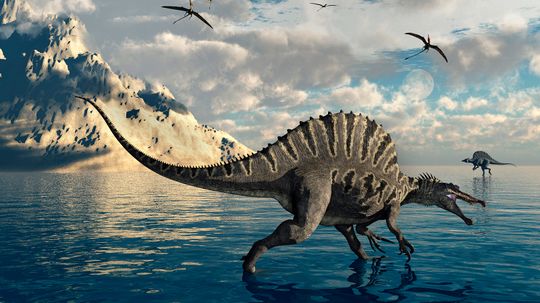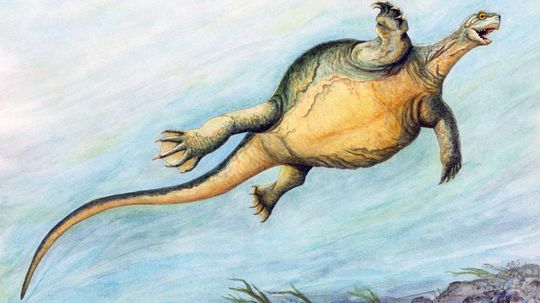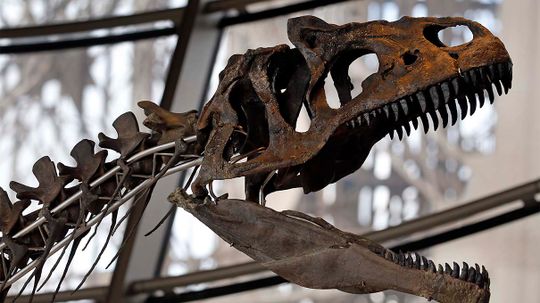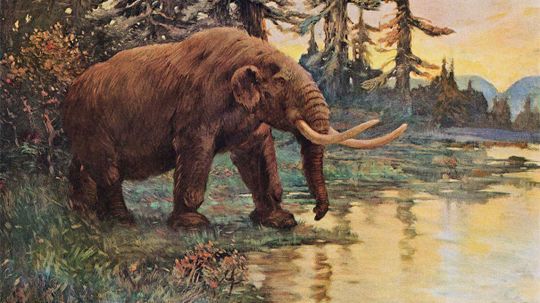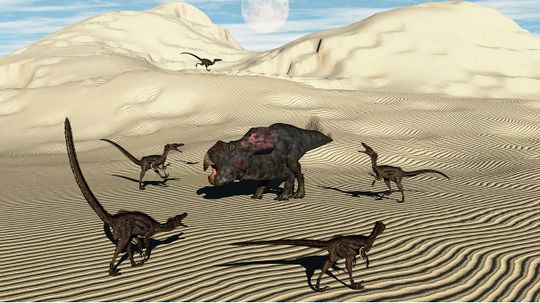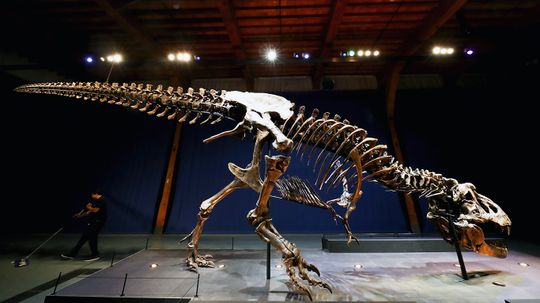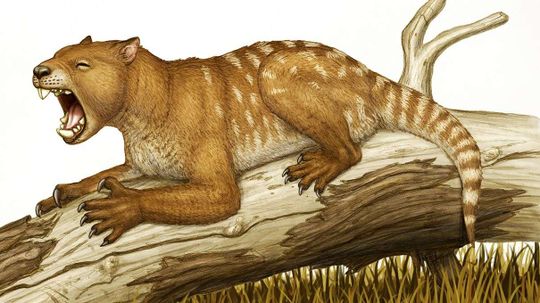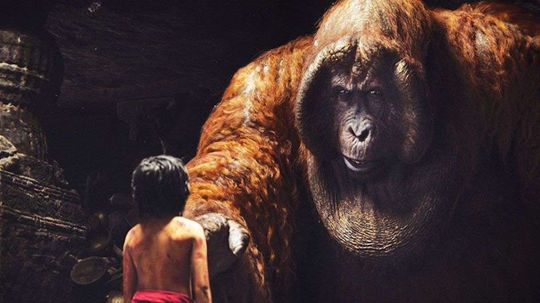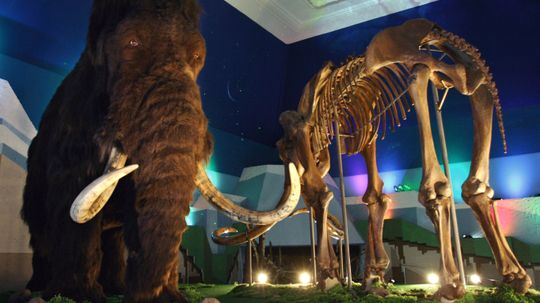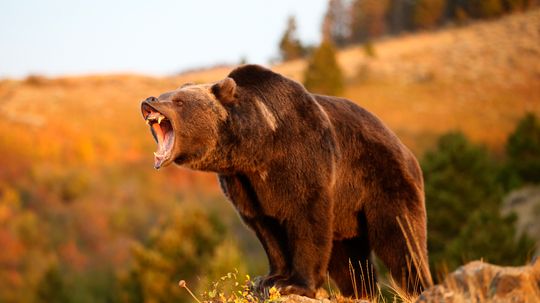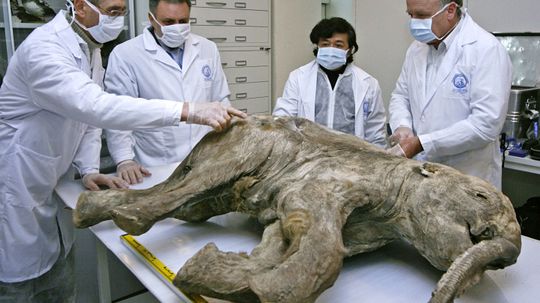Extinct Animals
Extinct animals are those species which are no longer living. This group includes prehistoric animals like dinosaurs and ice-age mammals, as well as moden species like the Dodo.

12 Scariest Dinosaurs You'd Want to Avoid While Time Traveling
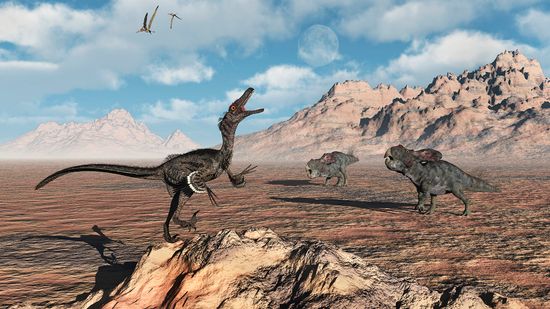
The Smartest Dinosaur (and 9 More Clever Prehistoric Reptiles)
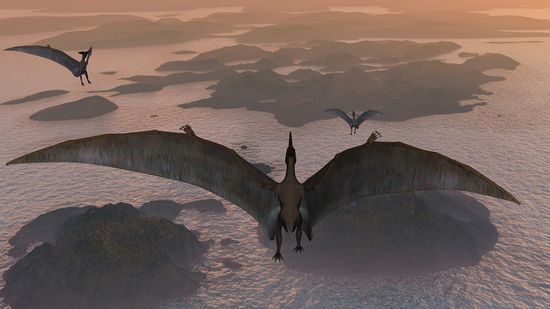
Pteranodon vs. Pterodactyl: Comparing Non-dinosaur Species

Are Snakes With Legs a Real Thing?

There Were No Flying Dinosaurs, Only Flying Reptiles
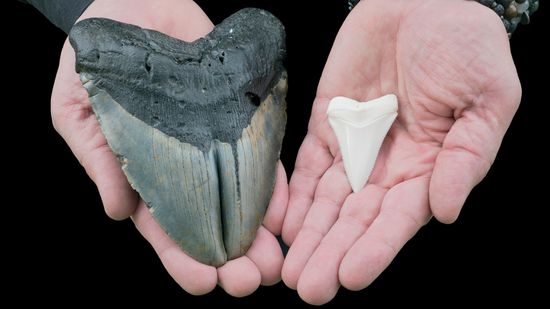
All About the Megalodon, Shark Giant of Prehistoric Times

The Most Recent Extinct Animal Was Last Seen in 1995

Real Life 'Jurassic Park'? Scientists Work to Bring Back Extinct Thylacine
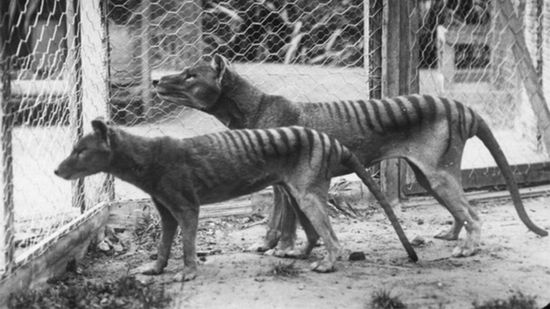
Once Thought Extinct, the Tasmanian Tiger May Still Be Prowling the Planet
Learn More / Page 2
Dimetrodon may look for all the world like a dinosaur, but was actually closer, evolutionarily speaking, to humans. Scientists are still trying to figure what their magnificent sails were used for.
By Mark Mancini
Known by the nickname "Mesozoic Cow," the African dinosaur Nigersaurus taqueti has also had its face compared to a vacuum cleaner.
By Mark Mancini
Fossils of just 12 individual Archaeopteryx, a winged dinosaur that live during the Jurassic, have ever been found. Aside from the rarity, what else makes this unique dinosaur so special?
By Mark Mancini
Advertisement
Tyrannosaurus rex, one of the fiercest meat-eaters ever, is the animal that probably springs to mind when most of us hear the word "dinosaur."
By Mark Mancini
Ankylosaurus was a dinosaur with short, squat legs that allowed it to run at about 6 miles per hour - fast, but not fast enough to outrun a large carnivorous predator like Tyrannosaurus rex.
Stegosaurus, an herbivorous dinosaur from 149 million years ago, walked on four legs, had a long, beak-tipped skull, a row of spikes adorning its tail and a pea-sized brain.
By Mark Mancini
Triceratops - which literally means "three-horned face" - is one of the most spectacular and well-known of all dinosaurs. It shared the Cretaceous landscape with, and probably was preyed upon by, Tyrannosaurus rex.
By Mark Mancini
Advertisement
The extinct Titanoboa snake lived around 66 million to 56 million years ago. These things were massive and could reach 50 feet long and 3 feet wide making them the largest snake ever to have roamed the Earth.
Constantly compared to the Tyrannosaurus rex, the Giganotosaurus was one of a handful of dinosaurs that rivaled, or possibly exceeded, the creature in size.
By Talon Homer
On Sept. 7, 1936, Benjamin, the last known Tasmanian tiger, died in captivity at the Hobart Zoo in Tasmania, Australia. But there are those who believe this extinct species still walks the Earth.
By Wendy Bowman
Back in the day, the soupy pre-Amazonian waters were filled with beasts like Stupendemys geographicus, a giant turtle the size of a sensible sedan.
Advertisement
These super-frightening entelodonts (aka hell pigs) once patrolled throughout Eurasia, North America and Africa.
By Mark Mancini
The villainous dinosaur from 'Jurassic Park' probably never had an affinity for water.
By Mark Mancini & Talon Homer
A 220 million-year-old turtle fossil discovered in China is the first of its kind ever to be found.
By Mark Mancini
Someone just paid $2.36 million to take home an exquisite dinosaur skeleton. The sale has added to the growing scientific anxiety about the commodification of precious, irreplaceable fossils.
By Mark Mancini
Advertisement
Massive mastodons roamed lower Kentucky during the last ice age. Jefferson was so fascinated by the creatures he was convinced they still roamed the plains in the 1800s.
By Mark Mancini
Scientists are at odds about whether Velociraptors worked together to take down their prey.
By Mark Mancini
Tyrannosaurus rex was a giant predator that roamed the earth, so why did it have such tiny arms?
By Mark Mancini
Scientists generally agree that dinosaurs sported colorful, feather-like plumage. So do moviemakers lack imagination, or do audiences?
By Chris Opfer
Advertisement
The method this ancient carnivore employed is unlike anything we see in predators today.
The character of King Louie gets a serious primate upgrade in the new Disney live-action-meets-CGI film. Did the ape also serve as inspiration for sasquatch and yeti?
Centuries later, the flightless bird is finally getting some cred.
By Robert Lamb
Both of these massive prehistoric creatures belonged to the same family, but they're actually very different species.
Advertisement
Grizzly bears are usually associated with colder climates, so you might be surprised to learn that they've also called Mexico home.
The basic idea of "Jurassic Park" - minus the carnage - is both appealing and approaching reality. But reintroducing extinct species requires some careful consideration.
